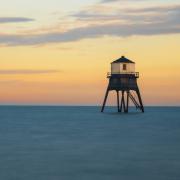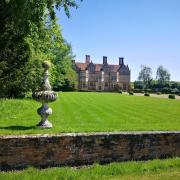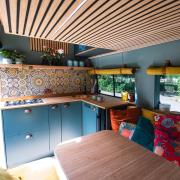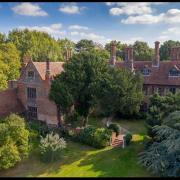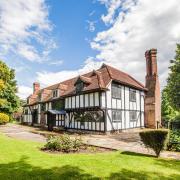Find out about the fascinating history of this beautiful Georgian red brick mansion in Hornchurch, which is currently a popular wedding venue
Langtons House in Hornchurch is a glorious Grade II listed 18th century manor house. A Georgian red brick mansion, Langtons is a construction of three storeys and five bays. It was owned by the Massu family who were wealthy silk merchants in London and Huguenot refugees from France. The Huguenots were reformed protestants who fled France in the sixteenth century from very real fears of persecution. In the twentieth century Langtons House was bequeathed to Hornchurch District Council with the condition that the building must be used for council purposes and that the garden should be open to the public. The gardens are a striking feature in themselves and were designed by the celebrated garden designer Humphrey Repton.

In the 13th century the land was described as ‘Langedun’ and held by Thomas de Langedun whose lands are now located near Basildon. Langtons House was constructed in the 18th century on the foundations of a much older house that stood in 1446 called Marchantes, the medieval word for merchant. Thomas Lathum was a custodian of the property in the 16th century. His family were wealthy and held significant lands within the vicinity. John Ellison and his widow Susan were the next owners followed by Richard Gosfright in 1730. Gosfright was an East India sea captain and ship owner. He owned what was then known as Langton Hall. The property was then left to his wife Catherine and then passed to his daughter Sarah who was married to John Mackrill, a wool merchant from Bermondsey. The Hall was sold to pay off debts to John Mayor.
Langtons was owned by John Mayor who was a brewer and politician as well as being the first superintendent of HM Stationery Office. The next residents at Langdons were the Wyatt family from 1785 until 1797. Richard Wyatt Senior hailed from Romford and was the retired governor of East India’s Fort Marlborough Settlement at Bencoolen in Sumatra, Indonesia. During his period as owner of the property, old Etonian Richard Barnard Wyatt, who was a keen sportsman, set up the Langton Park cricket club on what is now known as Fielders Sports Ground. Fielders Sports Ground originally formed part of Langton’s House grounds and was known as Langton Park when it was a first-class cricket ground. Imagine being a spectator at the matches that took place between 1785 and 1793 with Essex playing victoriously against Middlesex and Marylebone. Visions of ladies taking afternoon tea with poodles on their laps and parasols shading them from the sun spring to mind. Sadly these visions faded from view when the would-be cricketers were otherwise preoccupied in light of the Napoleonic wars and Essex no longer had a first class cricket team. Not all was lost though as the cricket ground is still in use today.

In 1797 Langtons as it was once again known was purchased by John Massu, a wealthy man of Huguenot extraction when it was put up for auction by Richard Wyatt. Massu modernised Langtons adding two two-storey wings to the house. It was John Massu who commissioned Repton to weave his magic on the four or so acres of garden. Professor Ged Martin in the Romford Recorder describes Langtons as ‘a gem, a bit of Kew Gardens in the middle of Hornchurch.’ Repton didn’t hold back when he set about constructing a serpentine lake, an orangery, a glasshouse (now used for weddings) and a gazebo. The bath house that stood next to the lake came later, in the early 19th century. The Land of the Fanns website, a five year partnership to rediscover and herald London as it once was, notes that Repton’s design incorporated paths, walls, a lake, gardener’s bothies, a ‘mazy’ shrubbery, an enclosed orchard and fine timber trees.
John Massu died in 1807 and is buried in the Essex village of Paglesham. His widow Mary continued to live at Langtons until her death in 1850. The next custodians of Langtons were the wealthy German family the Wageners. When John and Helena Jane Wagener both passed away, their son in law Colonel Henry Holmes sold the house to the Williams family.

On 1 June 1929 Langtons House and gardens was gifted to the town of Hornchurch by Varco Williams and his daughter Mrs Elizabeth Parkes on the proviso that the house should be maintained in its present state and that the gardens should be open to the public. Varco Williams was head of his family haulage business and Varco himself was an active member of local society. The Williams family remodelled the northern front and built the staircase hall as well as adding a billiard room and renovated the stable block.
No longer in private ownership, Langtons was now the office headquarters of Hornchurch Urban District Council where it remained as so until 1965 until the London Borough of Havering was formed. The latter used Langtons as council offices until 1976. During the Second World War the kitchen garden and woodland area were used as allotments but after the war the kitchen garden was replanted as a pleasure garden. During the 1960s no less than six full time gardeners were employed at Langtons and the tennis court was done away with to make way for plants. It was described as a showcase garden and no doubt this was for good reason! A greenhouse was also erected around this time and thanks to a recent lottery grant this was restored some five years ago along with some repairs to the orangery.

Today Langtons House ground floor is currently used as a place for civil ceremonies and as a registry office, and the function hall is used as a venue for wedding receptions and events. Births, deaths and marriages can be registered on the first floor of the building.
langtons-house.co.uk
Caption: Langtons is an 18th century manor house
Caption: The ground floor is now used for civil ceremonies
Caption: The gardens were designed by Humphrey Repton
Caption: The organgery was added to Langtons by Humphrey Repton
Caption: Langtons House is now a popular wedding venue
















